Earlier this week I sat down with one of our beloved Israel educators, Yishay Shavit. Yishay used some of his time during the pandemic – and shut-down of Israel’s tourist industry – to co-edit a fascinating collection of pieces by his guide colleagues, titled Heartbeats: The Insider’s Guide to Israel.
We had a great conversation about the publishing process, the stories in the book, and about some of his own experiences during the pandemic, as a parent at one of the seven Hand-in-Hand schools, a shared-society initiative that we are proud to feature through JCRC’s Boston Partners for Peace initiative.
I talked with Yishay about our experience working with him and some of the other educators in the anthology, and the deliberate effort he made to include a diverse set of voices from across the Israeli spectrum – right and left, secular and religious, Mizrahi, Russian, and Arab citizens of Israel. Knowing that he has Palestinian friends and colleagues who are not Israeli citizens and who guide under the Palestinian Authority tourism ministry, I asked him why those voices were not in the book.
His response is one I’m continuing to sit with.
Yishay said that the easy answer would be that this is a book about Israel. “But that would be a lie. You cannot understand Israel without the point of view of the Palestinians.” He went on to say that their plan had been to include at least one story from a Palestinian guide who was not an Israeli citizen. A Palestinian guide had in fact submitted an essay. But then, Yishay tells us, this guide withdrew from the project.
His Palestinian colleague told Yishay: “To talk to a group on a bus, it is wonderful. But to have everything printed, in a book… Someone is not going to be happy with what I wrote, Israeli or Palestinian. I could pay a heavy price for that and I simply don’t want to take the chance.”
Yishay then approached four other Palestinian colleagues, who raised similar concerns. Regrettably, he and his co-editors concluded that “it simply wasn’t going to work.”
Yishay called this a “tragedy.” “That people are too scared to write their own opinion, about the conflict… and print it in a book” (and to be fair, he notes, a book printed by Israelis) is why he and the other guides featured in this book are unable to capture the complete spectrum of the issues and nuances of the region.
For me, this story really gets at the complexity of telling the story of what’s happening in a place, particularly in a place like Israel. There’s such a difference between reading an article in a newspaper or book in America and traveling there and actually engaging with people on the ground. There’s no replacement for having authentic conversations with people to learn about them, their lives, and their realities. There are things people choose to tell or not to tell a reporter. And there are things people choose to have or not have on the record, in print, forever. The best, most illuminating, and most real conversations are the ones that happen in people’s living rooms – or on the bus – where they can tell me their truths, ones I sometimes find challenging to hear, but whose authenticity I cannot question.
I am, as always, grateful for Yishay’s wisdom, and for the stories that he and his colleagues share in this new book (and I encourage you to check it out). And I am grateful for the reminder that not all truths will be found in reading about a place. I’m yearning to get back to Israel as soon as I possibly can to continue these conversations. I’m excited for the pastors who will be traveling with us and Yishay next summer.
And I’m encouraging everyone to remember that you can’t really know everything about any place, and certainly not somewhere as complicated as Israel and the Palestinian Areas, by reading an article or a book. You have to go and have the conversations with the people who live there; with as many and as a diverse a representation of them as possible. In doing so, we can truly begin to understand this place, in all of its complexity, that we care so deeply about – while at the same time acknowledging what we still have yet to understand.
Shabbat Shalom,
Jeremy
Jeremy BurtonExecutive Director




